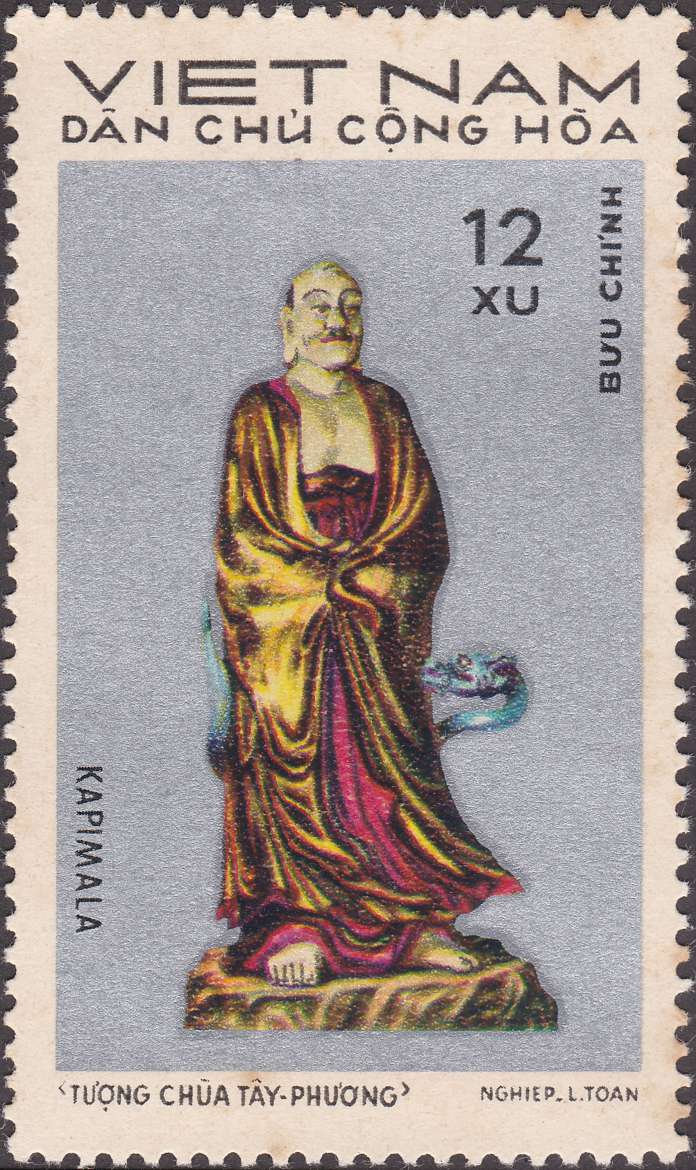WORLD BUDDHIST STAMPS e.GALLERY
bringing the buddhist world at the comfort of your home
| Kapimala - Tay Phuong pagoda | |
Tay Phuong pagoda, the collection of Vietnamese Buddhist culture, the art of Vietnamese Buddhism dates back the 16th century. It has the most interesting collection of arhats in Vietnam and one of the most attractive pagoda in outskirt of Hanoi.
The pagoda was built in the 8th century and has been restored several times since. In 1632, the pagoda was rebuilt according to the Sino-Vietnamese character Tam (three), featuring three sections: the upper sanctuary, back palace, and lobby rooms. It comprises three successive constructions: the Hall of Prostration, the Main Shrine, and the Sanctuary, all with double tiered roofs. It seems that this architectural arrangement is inspired by Buddhist and Confucianist thought: the three constructions symbolize the three forces governing the world.
All the wooden parts of the pagoda are beautifully sculpted following folk motifs: mulberry leaf Ficus leaf lotus flower, chrysanthemum; dragon, phoenix, etc. But the Tay Phuong Pagoda is mostly famous for the statues it contains, magnificent wooden sculptures representing Buddhas as well as Vajrapanis and Arhats who are middle-ranking Buddhist deities. One in particular portrays Sakyamuni in meditation at the foot of Tuyet Son (Snow Mountain). He was then leading a life of extremely severe ascetics, and his emaciated body, as represented by the statue, shows good knowledge by the artist of human anatomy. The figures of the Arhats each bear distinctive features which depict meditation in original aspects. All are impressive works of art. Stamp featuring Kapimala - Tay Phuong pagoda |
|
| Issued Country | Vietnam |
| Issued Year | 1978 |
| Category | Maha Sangha Buddhist Personality |
| Type | Postage Stamps |
